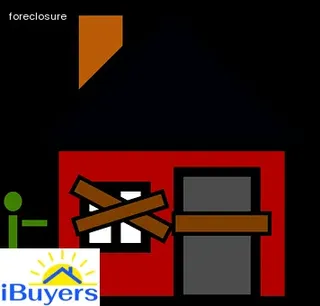When it comes to foreclosure in Oklahoma, there are several important things to be aware of. Preforeclosure is the first step in the foreclosure process and involves a homeowner failing to make their mortgage payments on time.
This can lead to a notice of default being served by the lender or mortgage servicer. It’s important to understand that this notice does not mean your home will immediately be foreclosed upon; instead, it serves as an official notification that you are at risk of losing your home if you cannot make up missed payments.
During preforeclosure, homeowners have options available to them, such as working with their mortgage servicer or consulting with a third-party housing counselor. Homeowners can also sell their house or enter into a forbearance agreement with their lender during this period.
No matter what option is chosen, it’s important for homeowners to take action quickly before entering foreclosure proceedings.

When it comes to mortgage loans and missed payments in Oklahoma, there are several important factors to consider. It's crucial to understand the legal landscape surrounding foreclosure in the state, including how mortgages work and what happens if a loan payment is missed.
In Oklahoma, lenders have the right to begin foreclosure proceedings after a borrower falls behind on his or her mortgage payments for a certain period of time. Foreclosure is an expensive process, so lenders prefer to work with borrowers before it proceeds too far.
Homeowners should be aware of their rights during the foreclosure process and take steps to protect themselves from unfair practices by lenders. Additionally, they should also consider working with an experienced attorney who can help them navigate Oklahoma's foreclosure laws and regulations.
Ultimately, understanding mortgage loans and missed payments in Oklahoma is essential for anyone facing potential foreclosure in the state.
In Oklahoma, the foreclosure process begins when a mortgage lender or loan servicer files a Notice of Default with the court. After this is filed, the homeowner has 90 days to catch up on their delinquent payments in order to avoid foreclosure.
During this time, it’s possible for the homeowner and lender to work out an agreement that could keep them from ending up in foreclosure. If the homeowner cannot make their payment within 90 days, then a Notice of Sale is issued.
At this point, an auction will take place and the property will be sold at public auction if there are no bidders. The proceeds from the sale go towards paying off any outstanding debts associated with the property including costs related to evicting any tenants and selling the house.
If there are any funds left after all debts have been paid, they will be returned to the borrower.

Oklahoma homeowners facing foreclosure may feel overwhelmed by the process, but understanding their rights can help them navigate the situation. Under Oklahoma law, all foreclosures must be done through the court system and are subject to certain consumer protections.
Homeowners have the right to receive a notice from their lender which includes information about how to contact them and details of the foreclosure proceedings. In addition, they have the right to request a loan modification or repayment plan, as well as attend any hearings related to the foreclosure.
Homeowners also have access to mediation services, which are offered at no cost and provide an opportunity for both parties to negotiate a solution. It's important for homeowners to take advantage of these resources and understand their rights when facing foreclosure in Oklahoma.
In Oklahoma, homeowners facing foreclosure have several options that can help them avoid the process. One of these is to seek a loan modification from their lender.
This process involves negotiating with the lender to adjust the terms of the existing loan in order to make it more affordable for the homeowner. Another option is to sell their home through a short sale, which allows them to avoid going through foreclosure and possibly receive some money back in the process.
Homeowners may also be able to negotiate a repayment plan with their lender that allows them to catch up on missed payments over time while still being allowed to keep their property. Finally, they can file for bankruptcy protection, although this should only be done as a last resort since it will have long-term credit consequences.

In Oklahoma, there are two processes for foreclosures: judicial and nonjudicial. Judicial foreclosure is the process of utilizing a court to take possession of a mortgaged property.
This type of foreclosure must be done through filing a lawsuit against the homeowner. Nonjudicial foreclosure, on the other hand, is a process in which a third-party trustee or lender takes possession of the mortgaged property without going through court proceedings.
The trustee or lender can then sell the home at an auction to recover the unpaid mortgage debt. In Oklahoma, this type of foreclosure must be conducted according to strict guidelines set forth by state law, including requirements for notification and advertisement.
Judicial foreclosures tend to take longer than nonjudicial ones; however, they provide more protection for homeowners as they go through the process with the oversight and supervision of a court.
In Oklahoma, the foreclosure process begins when a lender files a lawsuit against a borrower. The lawsuit is typically filed in the county where the property is located and can be based on either a breach of contract or default on payment.
Once the lawsuit has been filed, the court will issue a Notice of Foreclosure to the borrower. This notice must include information about the date of filing, amount due, and any other information that is pertinent to the case.
After this Notice has been issued, it will remain active for up to two weeks before the lender can move forward with scheduling a foreclosure sale. It is important for borrowers to take note of this timeline as they may have an opportunity to settle matters with their lender prior to the foreclosure sale taking place.

A Breach Letter is a formal document sent to a homeowner who has defaulted on their mortgage payments in Oklahoma. This letter informs the homeowner that they have breached their contract and are subject to foreclosure proceedings.
The Breach Letter also outlines the steps that must be taken by the homeowner in order to rectify their breach of contract, such as reinstating the loan, selling their home, or negotiating an alternative solution with their lender. In addition, it outlines the timeline for each step and any associated fees that may be due.
Failure to comply with the terms outlined in the Breach Letter could result in foreclosure proceedings being initiated. It is important for homeowners facing foreclosure to understand what a Breach Letter is and how it affects them so they can take the necessary steps to protect their rights and prevent foreclosure from occurring.
The foreclosure process in Oklahoma can be complicated and intimidating, so it's important to understand the steps required to complete a foreclosure sale. Before a property is foreclosed, lenders must first send a notice of default to the borrower, which gives them 30 days to make up payments or reach an agreement with their lender.
If the borrower fails to do either, the lender will then file a petition for foreclosure with the county clerk's office. After that, a notice of sale is sent out and published in local newspapers at least five times over three weeks before the actual sale date.
On the set date, all interested bidders must register and deposit money with an auctioneer prior to bidding on any properties. After a successful bid, the bidder must pay off any remaining mortgage balance within 10 days and submit proof of payment with their deed at the clerk's office.
All of these steps must be taken in order for a foreclosure sale in Oklahoma to be completed successfully.

In Oklahoma, the average duration of a foreclosure case is approximately four to six months. The process begins when the lender files a lawsuit against the homeowner and serves them with a summons and complaint.
Then, a notice of sale is published in an official newspaper informing the public of the foreclosure sale. After this publication, there is typically a period of redemption that lasts for up to two months before the property can be sold at auction.
During this time, homeowners may still have the opportunity to negotiate with their lenders or pursue other alternatives, such as loan modifications or short sales. Once the property has been sold at auction, ownership transfers to the new owner and any remaining debt or deficiencies owed by the former homeowner must be paid within 30 days.
When it comes to foreclosure in Oklahoma, understanding the default notices and timelines is essential. Homeowners need to be aware of their rights and obligations under Oklahoma law when a mortgage lender initiates foreclosure proceedings.
In Oklahoma, a default notice must be sent by the lender before they can take action against the property. The default notice must contain certain information, such as the amount owed on the loan, any late fees or other charges that have been assessed, and a statement that the borrower has 30 days from receipt of the notice to cure the default.
After this period has expired, if the borrower still has not cured the default, then foreclosure proceedings may begin. It is important for homeowners to respond promptly and resolve any issues in order to avoid foreclosure.
In addition, Oklahoma law requires lenders to provide borrowers with at least 45 days’ written notice before taking any legal action related to foreclosure. This provides homeowners with an opportunity to seek out help from legal or housing counseling services if necessary.
Failing to comply with these timeframes can result in serious consequences for both borrowers and lenders in Oklahoma's foreclosure process.

Filing an objection or answer to a summons and complaint in Oklahoma is a crucial part of the foreclosure process. This can be done by filing a written response, called an Answer and Objection to Summons and Complaint.
In this response, the homeowner must provide details about why they believe they should not lose their home and whether they have any objections to the foreclosure process. The Answer and Objection must then be filed with the court clerk in the county where the foreclosure action was started.
It is important to note that it is necessary to include all relevant information in this document, as failure to do so could result in a default judgment against the homeowner. Additionally, it is important that all documents are properly served on all parties involved in accordance with Oklahoma law.
By taking these steps, homeowners can ensure that their rights are protected during the foreclosure process in Oklahoma.
The court plays an important role in the foreclosure process in Oklahoma. After a borrower defaults on their mortgage, the lender can initiate a legal action against the borrower to recover what is owed.
This legal action will be heard by a judge who will consider all of the evidence presented, including any defenses offered by the borrower. If the judge determines that foreclosure is an appropriate action, they will issue an order authorizing it to proceed.
The order will also outline how and when the foreclosure auction will take place and include instructions for both buyers and sellers. At this point, potential buyers can begin researching properties and preparing bids for auction day.
On auction day, bidders are expected to arrive with cash or a certified check and must follow all bidding procedures outlined by the court. Once a bidder has won, they must pay the full amount of their bid immediately or forfeit their chance to purchase the property.

Oklahoma homeowners facing possible foreclosure have several options to pursue in order to avoid losing their home. These options include reinstatement, redemption, and other loss mitigation strategies.
Reinstatement is the process of catching up on missed mortgage payments and associated fees or penalties within a certain period of time. Redemption allows borrowers to buy back their property from the lender after foreclosure proceedings have begun by paying off any remaining loan balance plus legal fees associated with the foreclosure process.
Other loss mitigation strategies may be available depending upon the lender and specific circumstances, such as loan modifications, forbearances, or partial claim loans. It is important for Oklahoma homeowners facing foreclosure to understand their rights and options in order to determine which path is best for them.
In Oklahoma, a deficiency judgment is an order from the court to an individual or business to pay off the balance of their home loan after a foreclosure. Deficiency judgments can only be obtained if the property is worth less than what was owed on it, and they are usually limited to the amount not covered by the sale of the property.
Furthermore, Oklahoma law prevents lenders from collecting a deficiency judgment if they have sold mortgaged property through foreclosure without first giving notice to the borrower. The lender must also prove that they have taken reasonable steps to recover their losses before obtaining a deficiency judgment.
Additionally, if the borrower has been current in their mortgage payments prior to filing for bankruptcy and then becomes delinquent, a deficiency judgment may not be pursued. These laws and regulations are in place to protect borrowers from excessive debt collection practices and ensure fairness in this area of law.

When it comes to foreclosure in Oklahoma, understanding the effect of a deed-in-lieu on credit reports is important. A deed-in-lieu of foreclosure is when the homeowner transfers ownership of their property directly to the lender, thus avoiding the entire foreclosure process.
Generally, this has a negative impact on credit scores, but in some cases the lender may agree to not report it as a foreclosure. Post-foreclosure deficiencies are handled differently in Oklahoma than in other states.
When a deficiency exists after a sale or auction, the lender may pursue legal action or file an order with the court. It’s important to note that even if a deficiency judgment is entered against you, there are options available such as bankruptcy protection and negotiation with the creditor.
If you’re facing foreclosure issues in Oklahoma, seeking professional help is always recommended as they can provide advice and guidance on how best to proceed. After an auction occurs, there will be a confirmation hearing which serves to review whether any irregularities occurred during the sale process and allows for objections by interested parties regarding title or rights of redemption.
If all goes well at this stage and your bid was successful at auction, then you may take possession of the property after payment has been made and all required paperwork has been completed.
The foreclosure process in Oklahoma generally follows the same steps as other states. First, a mortgage lender must file a Notice of Default with the county court clerk.
This notice informs the borrower that they are in default on their loan and that legal action may be taken if the debt is not repaid. Next, an Order of Sale must be issued by the court, authorizing the lender to sell the property at a public auction.
The proceeds from this sale will go towards paying off the debt owed to the lender. If there are still funds remaining after this payment, those funds will be returned to the borrower.
Finally, if no one bids on the property at auction, it will become property of either the state or federal government depending on which laws apply in Oklahoma. It is important for borrowers to understand their rights under Oklahoma law so that they can take steps to protect themselves during this process.

In Oklahoma, if you miss four consecutive mortgage payments, the foreclosure process will begin. The lender must provide you with a notice of default and intent to accelerate your loan.
After that, a notice of sale is sent to you and the public. This notice will indicate when and where the property will be sold at auction.
If no one bids on the house, then it goes back to the lender who now owns it. It is important to remember that even if you do miss payments, there are still many options available to help you avoid foreclosure such as working out a payment plan or refinancing the loan.
In Oklahoma, homeowners are typically given six months of missed mortgage payments before they are considered to be in foreclosure. After that time period, the lender can begin the foreclosure process.
During this period, lenders will usually send notices and contact the homeowner to discuss payment options or other solutions, such as loan modifications or forbearance agreements. If a solution cannot be found and payments are not made, then the lender can initiate a foreclosure proceeding in court.
The entire process can take anywhere from four to six months or longer depending on the situation.
Oklahoma is one of the states with the longest foreclosure process. Before a lender can foreclose on a property, they must go through a lengthy process that includes meeting certain legal requirements.
The first step is to file a legal notice in the public record and serve it to the homeowner. This must be done at least 30 days before beginning the foreclosure process.
The homeowner will then have 15 days to dispute the claim made by the lender and an additional 15 days for any necessary court proceedings. After this time period has elapsed, the lender may proceed with filing an action in district court to initiate the foreclosure process.
Depending on state law and local procedures, it may take up to 1 full year for this entire process to be completed, making Oklahoma one of the longer states when it comes to completing foreclosures.